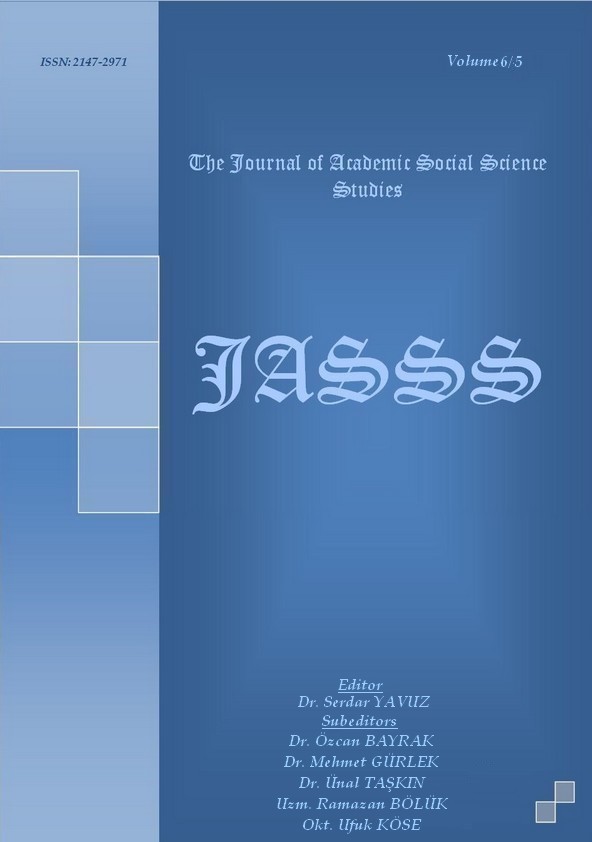Author :
Abstract
Araştırmada ana dili bilme düzeyi ile yabancı dil başarısı arasındaki ilişkinin incelenmesi amaçlanmıştır. Araştırma Gaziantep Üniversitesi Yabancı Diller Yüksekokulu’nda yürütülmüştür. Araştırmanın örneklemine Gaziantep Üniversitesi Yabancı Diller Yüksekokulu yabancı dil hazırlık sınıfında okuyan öğrencilerden 421’i dâhil edilmiştir. Araştırmada veri toplama aracı olarak dönem başında öğrencilere altmış soruluk –ÖSYM tarafından geçmiş yıllarda sorulan– okuma-anlamaya yönelik ana dili (Türkçe) testi uygulanmıştır. Daha sonra öğrencilerin yabancı dil seviyelerini tespit etmek amacıyla okuma-anlamaya yönelik altmış soruluk yabancı dil ön testi uygulanmıştır. Öğrenciler yabancı dilde almış oldukları puanlara göre A, B ve C olmak üzere üç seviye şeklinde ayrılmıştır. Dönem içerisinde altı adet ara sınav (vize) ve yirmi adet sınavcık (quiz) uygulanmıştır. Dönem sonunda ise yabancı dil dönem sonu sınavı yapılmıştır. Yıl içi notlarının %40’ı, yılsonu notunun %60’ı alınmıştır. Bunun sonucunda öğrencilerin yabancı dil başarı düzeyleri belirlenmiştir. Araştırmanın amaçları doğrultusunda toplanan veriler, verilerin özelliklerine göre analiz teknikleri (Anova, Post-Hoc Testi, Korelasyon ve Kısmi Korelasyon) ve SPSS yazılımı kullanılarak çözümlenmiş; bulgular tablolar halinde sunulmuş ve yorumlanmıştır. Araştırmada ilişkisel tarama modelinden yararlanılmış; evren de örneklem olarak kullanılmıştır. Gruplar arası farklılık ve anlamlılık değerleri tespit edilmiş, karşılaştırmalar yapılmıştır. Araştırma sonucunda öğrencilerin ana dili bilme düzeyleriyle yabancı dil başarıları arasında doğru orantılı bir ilişki olduğu saptanmıştır. Araştırma sonunda söz konusu ilişkiden hareketle bazı öneriler dile getirilmiştir.
Keywords
Abstract
In the study, the correlation between mother tongue knowledge and foreign language success has been analyzed. The study has been carried out in Gaziantep University Higher School of Foreign Languages. The sample of the study has covered 421 preparatory class students at Higher School of Foreign Languages. As a data collection tool through the study, the students were given a 60-item reading comprehension test, which was previously inquired by OSYM, in their mother tongue (Turkish). Afterwards, a 60-item foreign language proficiency test was conducted to reveal students’ proficiency levels. The students were distributed to three proficiency levels -namely A, B and C, according to their proficiency levels. Also, six midterm exams and twenty quizzes were conducted during the year. At the end of the year, the final exam of foreign language was conducted. As a holistic grade, 40% of the yearly grades and 60% of the final exam were taken. Consequently, the students’ foreign language proficiency levels were determined. All collected data was analyzed according to the data characteristics using analysis techniques (as Anova, Post-Hoc Test, Correlation and Partial Correlation) and use of SPSS in accordance with the purpose of the study, and the results were presented and interpreted on tables. A relational screening model has been used within the study, and the population has been used as a sample. Intergroup discrepancy and significance have been obtained and a comparison has been conducted. At the end of the study, it has been explored that there is a significant correlation between mother tongue proficiency and foreign language success. Furthermore, certain proposals have been presented with subject to this relationship as a result of the study.





